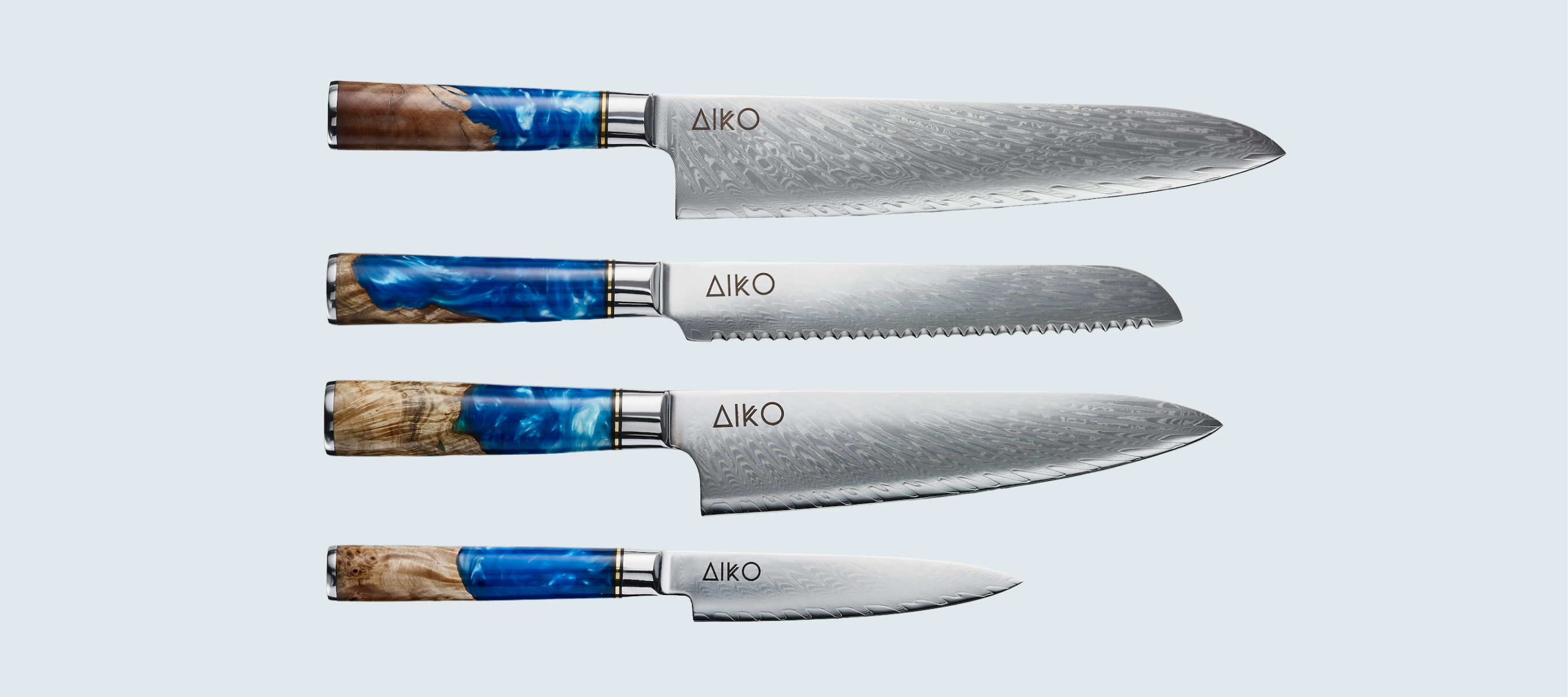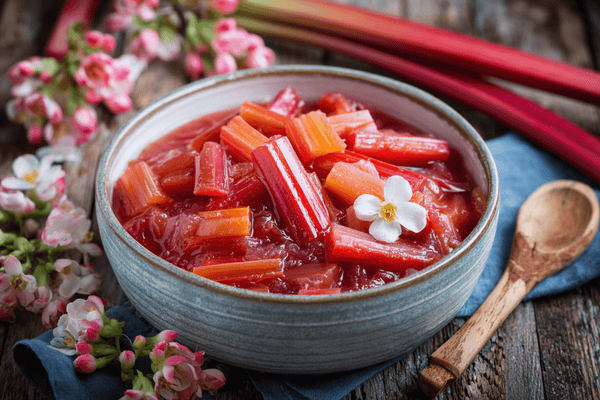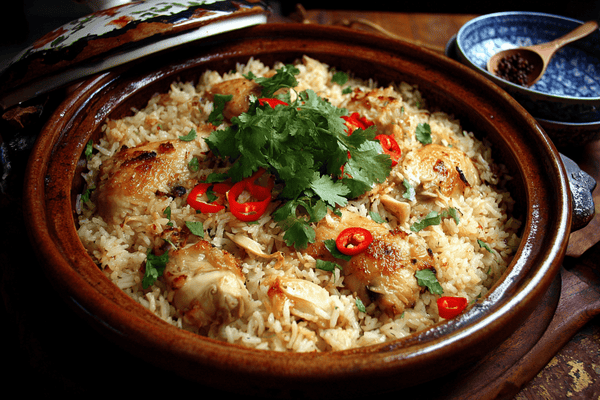
When you watch TV cooks or professional chefs in restaurants, there’s one thing you’ll notice; they all have a wide range of quality knives. That’s because no two knives are the same and each chef's knife is designed to do a different job.
If you want to make life easier when you cook, then choosing a selection of stainless steel chef's knives will help you achieve that. But if you’re new to this concept then knowing where to start and what to buy can feel a little overwhelming. After all, there really are so many different style of knives. So which kitchen knives do I need?
In this article, we will be looking at some of the most important knives every home cook and aspiring chef needs in their kitchen. If you’re just getting started on building a collection then these are your must-have kitchen knives - the knives every chef should own.
Table of contents
Do I Really Need More Than One Chef's Knife?
When you’re trying to build your kitchen arsenal, it can be tempting to avoid buying lots of unnecessary equipment; and rightly so. According to experts, you really only need four quality chef's knives to get started. After this, you can build your knife collection and splurge on something like Japanese knife sets, ornate cheese knives or the best steak knives you can find.One thing you should avoid is buying just one steel kitchen knife. Let’s imagine you buy something large, like a chef’s knife; yes, these are very versatile, but they won’t work for every kitchen task.
When it comes to tasks that require a little more detail like peeling for example or intricate slicing, your chef’s knife will be too big. Opting for a paring knife here will work much better. Equally, a serrated bread knife would not be the best choice to prepare a carrot into juliennes or deseed a pepper.
Moreover, using a knife that is the wrong size or weight for the wrong tasks could prove dangerous. If you attempt to cut something that’s far too dense or hard for the razor-sharp knife you’re using, there’s a real risk of slipping and injuring yourself. Kitchen safety whilst cooking should be your number one priority.
Four Essential Kitchen Knives
If you want to be able to tackle most kitchen tasks with ease, then we would recommend starting with a chef’s knife, a paring knife, a bread knife and a carving knife. Let’s take a closer look at the blades of these essential knives.Chef's Knife
 Many people would consider the sharp edge of the chef’s knife to be the most important tool in any kitchen when it comes to cutting and prepping foods. It’s incredibly versatile and allows you to do everything from slicing vegetables to chopping and dicing meats.
Many people would consider the sharp edge of the chef’s knife to be the most important tool in any kitchen when it comes to cutting and prepping foods. It’s incredibly versatile and allows you to do everything from slicing vegetables to chopping and dicing meats.The chef's knife is a larger steel knife with a blade usually measuring between eight and ten inches in length. The blade is also much wider on a chef knife than other types of knives, so it isn’t ideal when you need to do more detailed work.
Paring Knife
 Where the chef’s knife cannot perform intricate tasks, paring knives come in very handy. You’ll use this for smaller foods or cutting techniques on your cutting board such as fine slicing and mincing. Think finely chopping garlic or mincing herbs and you’re on the right track.
Where the chef’s knife cannot perform intricate tasks, paring knives come in very handy. You’ll use this for smaller foods or cutting techniques on your cutting board such as fine slicing and mincing. Think finely chopping garlic or mincing herbs and you’re on the right track.The blade of the paring knife typically only measures between three and four inches so it’ll allow you to take on much more intricate work. However, the downside is that your paring knife will struggle with harder foods like vegetables so for this, you’ll need to go for a larger, stronger style of knife.
Bread Knife
 You might wonder why we are including the serrated bread knife on this list; surely it’s not very versatile if it’s designed solely for slicing bread. But that’s where many people get confused. These are officially called serrated knives but they’ve become so synonymous with cutting bread that they’ve earned themselves this nickname.
You might wonder why we are including the serrated bread knife on this list; surely it’s not very versatile if it’s designed solely for slicing bread. But that’s where many people get confused. These are officially called serrated knives but they’ve become so synonymous with cutting bread that they’ve earned themselves this nickname.But 'bread knives' or serrated knives, can do so much more. A serrated knife edge is ideal for cutting cakes but really excels when it comes to working with foods like fruits and vegetables. They make light work of tomatoes, pineapple and peppers as they offer greater traction through the skin of the food so don’t slip as easily. Once you get to grips with this type of knife, you’ll find yourself using it more and more when you cook.
Carving Knife
 Carving knives come under the category of butcher’s knives, and we have a full guide on those here. However, if you’re looking only to invest in one type of butcher’s knife then the carving knife is a wise choice.
Carving knives come under the category of butcher’s knives, and we have a full guide on those here. However, if you’re looking only to invest in one type of butcher’s knife then the carving knife is a wise choice.These long, sharp blades make cutting meat into slices or off the bone so simple. You’ll often find them at the table when the family gathers around for Sunday dinner as the meat will literally fall away as the blade moves through it.
Other Knives to Consider
While the knives we have discussed above are what you would consider ‘must-haves’, there are a few other types that we think make a great addition to the kitchen of all home cooks. Let’s take a brief look at these now.● The santoku knife is one knife often used as a replacement for the chef’s knife. The santoku is a Japanese knife that is a little shorter and narrower than a western chef’s knife but this sharp blade is able to perform all of the same tasks.
● A utility knife is a great tool for jobs that your chef’s knife is too big for. Slightly larger than a paring knife between four and seven inches in length, you’ll find it indispensable for things like filleting and trimming meat.
● The boning knife is pretty self-explanatory. Boning knives are typically around 5 inches in length and are used for removing meat from the bone and while it isn’t something you’ll use for every meal, it’s something worth keeping in your knife holder.
● A cleaver is a very large, square-tipped knife with a wide blade that is used for chopping meats. Because of its strength, being approx 7 inches in length, it’ll also make light work of cutting through bone but its wider blade also makes it ideal for pulverising.
Final Thoughts
Having a good selection of professional stainless steel kitchen knives in your knife collection means that you will be able to do almost any culinary task safely and efficiently.There are four quality knives that you must have in your knife block no matter where you are on your cooking journey to give you access to blades with both a sharp edge and the best quality serrated blade.
However, there’s also a great choice of other knives that you can add to your collection as you go along, helping you with your recipes and improving and honing your culinary skills even further.
The key advice of course to for any stainless steel blade is to make sure that it is cared for in the correct way and you maintain a sharp edge.
A honing steel is a good investment for use before every time the knife is used, and then a whetstone is the recommended method for sharpening any dull edge and eradicating any imperfections on the blade.
Sharpening a serrated knife needs different methods to the maintenance of smooth blades. We have an article including information on the care of both sorts of blades here in our blog.


